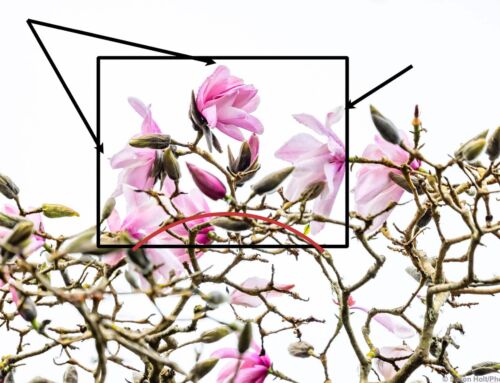On a recent visit to the Arnold Arboretum in Boston I found students at Harvard’s Masters of Landscape Architecture program using a framing tool, somewhat similar to what I use with my photography classes.
The landscape architecture students use their frame as a “fixed point of comparison” of the changing garden as well as “to reflect upon our own position within the landscape.” I see a camera frame.
The simplest tool for creating a photo composition is the camera itself. The four edges of the camera viewfinder create a canvas to be filled consciously by the photographer. It is Composition 101 – chapter one of Book One in my series of PhotoBotanic Garden Photography Workshops. It works with any camera.
In my Framing workshops I set up a 4×8 foot frame in the garden, much larger than the one used by the Harvard students, but serving a similar purpose: to isolate and consider a part of the garden within the larger landscape.
For my students the large frame allows them to approach it from a distance, seeing the garden as if using a telephoto lens, then imagining a wider lens the closer the viewer gets to the frame, but always the four edges are simultaneously a composition tool.
When I saw the Harvard frame in the Arboretum it looked much more like an actual canvas in the field, perhaps because I had spent the previous day, in the Impressionist section of the Museum of Fine Arts of Boston.
Before and After Slider









Leave A Comment